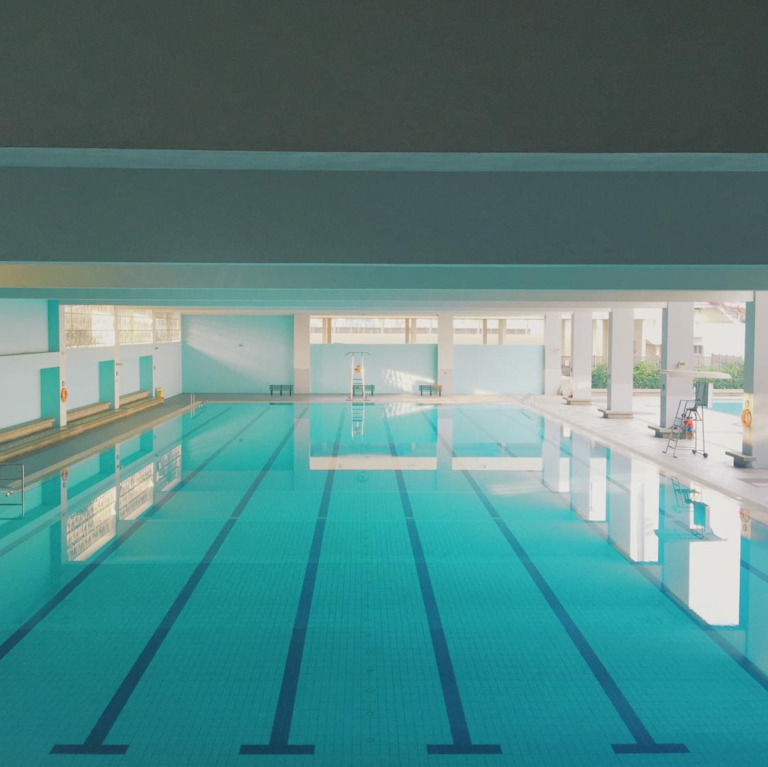
“Swimming is simply moving meditation.” ― Cesar Nikko Caharian
I can’t remember when I fell in love with swimming. A part of it is nostalgia, I suppose. When I was a kid my parents used to bring me and my siblings to Bishan Swimming Complex, a local public pool, on the weekends. It was a rowdy and happy affair. I can still smell the chlorine, taste the cheap microwaved pool-side cafe food and remember how smooth my skin felt after my post-swim showers. It’s been 20 years since, but it still feels like yesterday.
When I grew older, swimming became a refuge. I swam whenever I was upset or depressed. And it helped – I was always left happier after each swim, and my head clearer. Sometimes I’d also have light-bulb moments in the pool, ideas bubbling up from seemingly out of nowhere. The pool, for some reason, inspires, elevates and is a great cure for many ills.
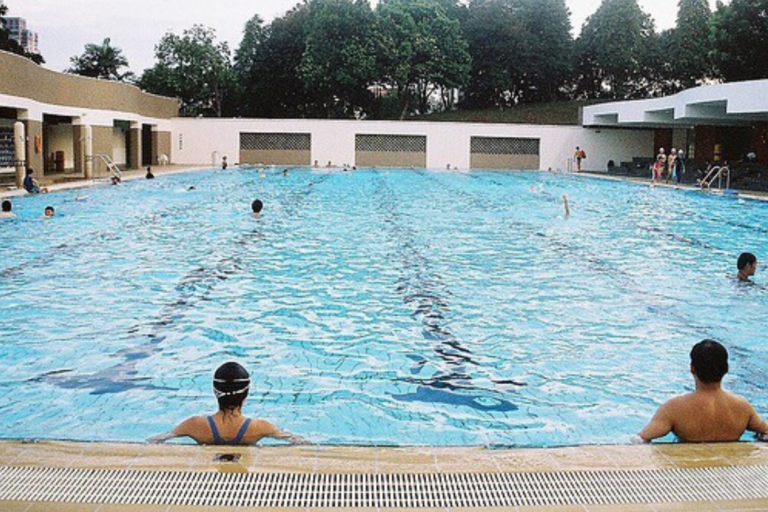
Bishan Swimming Complex, where my parents used to take me and my siblings.
About three years ago, I decided to go for proper swimming lessons. What I knew about swimming, I’d learned from my grandfather. I knew the breaststroke and how to trap water and float, but that was the extent of it. I wanted to learn proper techniques and to swim less like an amateur and more like a person who knows how to swim. More importantly, I desperately wanted to learn how to swim freestyle.
So I started taking lessons from Sue, a 65-year-old swimming coach I’d met serendipitously at a photoshoot. Sue has a fascinating life story. She started swimming in 1993 after she strained her back propping her sick husband up in bed. Visits to the doctor didn’t help, so heeding a friend’s advice, she started swimming 25 laps a day. Her back was cured after two or three months.
Sue rides a motorbike, travels once a month, wakes up at 5.30am to walk 5km a day, has done a marathon and several half marathons, and swims the same number of laps as her age on every birthday. Just this past October, Sue turned 68 and swam 68 laps at the pool.
How cool is she?

This is how my swimming coach Sue looks like – at 65! And yes, she got me to do a photoshoot for her. Haha.
This reminds me of another story Terry Laughlin – the legendary swimming coach who invented Total Immersion Swimming (TI Swimming), a method that teaches people how to swim like fish – told about his oldest student ever, Dr. Paul Laurie, who at age 93 picked up TI Swimming on his own through a DVD, and then showed up at the doorstep of Laughlin’s swimming studio at 94 requesting for lessons in swimming the butterfly stroke. At 94!
Before that, Dr. Laurie had spent 40 years as a Pediatric Cardiologist, and upon retirement, became an emeritus professor at a medical college for another 25 years.
Even without knowing the details of his life, I can already sense Dr. Laurie’s palpable zest for living.
About two weeks ago, Terry Laughlin, the inventor of TI Swimming and whose blog I have enjoyed reading (through which he muses passionately about the link between swimming and happiness and the joy of mastery) passed away. His passing made me pick up the TI Swimming book that has been collecting dust on my bookshelf. It made me think of why I’d stopped swimming when it was clearly something I enjoyed and wanted to improve at.
Like Dr. Laurie, I too have the Total Immersion Swimming videos downloaded on my computer, but unlike him, I never had the self-discipline and will to commit to the programme long enough to see any huge improvement in my swimming. I did learn to swim a very beginner’s version of the TI freestyle, but it’s nothing to boast about.
I am lazy and inconsistent, but deep in my core, I want to be as cool and awesome as people like Sue and Dr. Laurie, and anyone else who dedicates themselves to a sport or an activity or a craft. But in particular, a sport. There is something about moving and training your body that intrigues me. I was never an athlete and never thought of myself as a sporty person, but TI Swimming preaches exactly the fact that you don’t need to be young or athletic or particularly strong to become good at a sport like swimming.
It is also true that I feel best when exercise is a big part of my life. When I was running a lot, when I was swimming regularly, when I was rock-climbing two or three times a week (right before my jaw surgery), I felt good, and both stronger and lighter. Sometimes it would strike me that that’s all it takes to be happy – one good session in the pool, one long run around my block, one challenging climb up the wall.
So I have a renewed desire to make sports and exercise a big part of my life. And hopefully by doing that I can age as gracefully and healthfully as Sue and Dr. Laurie and Terry Laughlin.
More importantly, I want to start doing the things I want to do. For real. And to quit simply thinking about doing them. And sports/exercise on a regular basis is just one of the many things on my list.
I guess you could say that I want very much to squeeze every drop out of this short but sweet life, and I’m not going to let my laziness and inconsistency stop me from doing that. Even if I fail (at anyone of those things on my list), I’m going to try again and again.
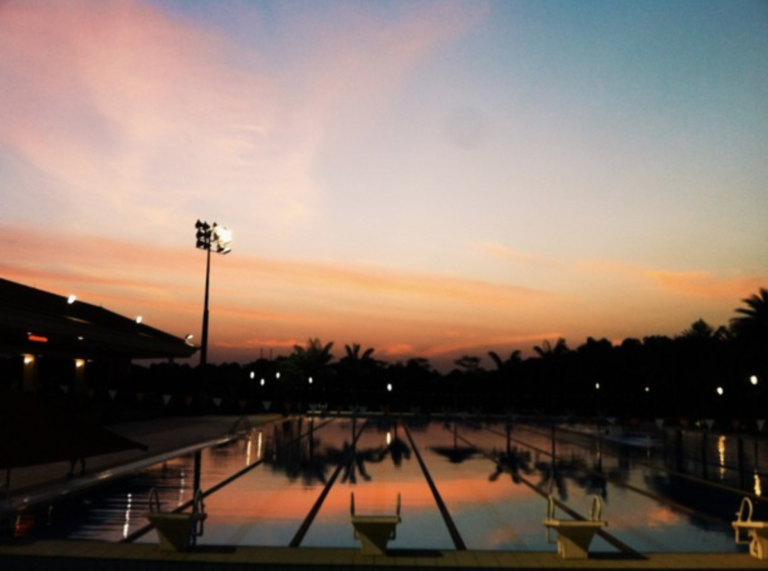
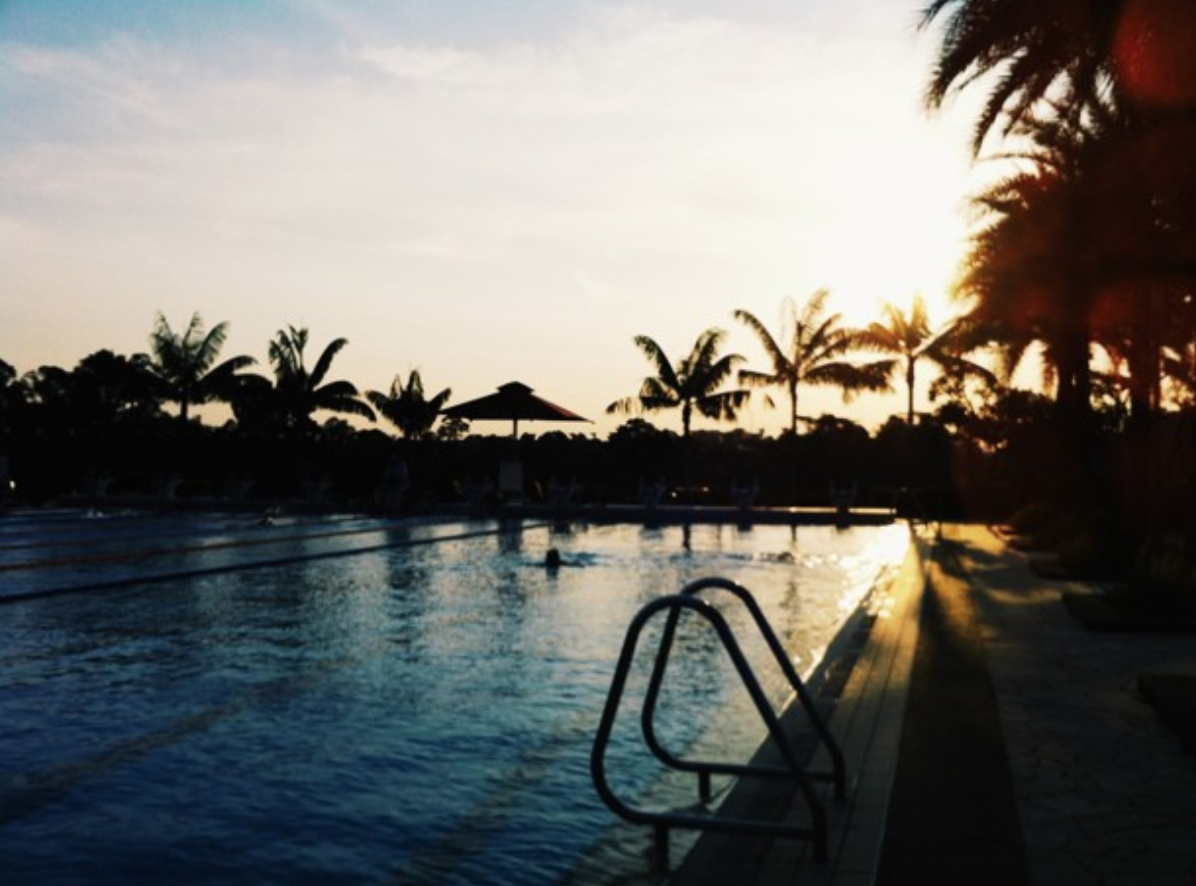
Swimming and watching the sun set counts as one of the best experiences one can have in life.
But yes, TI Swimming. As much I want to run and hike and rock-climb and play table tennis, what I want to do the most at the moment is to master TI Swimming. That’s because I’ve been talking about learning it for the longest time. It’s not that I’m going to stop running or rock-climbing, but for now, I want to put a lazer focus on swimming.
In Terry Laughlin’s last podcast interview, he talked about how, to master something, there are two keys: pleasure and attention.
It sounds obvious but it’s not. Too few of us find joy in the things we are doing or learning to do, and even fewer of us pay careful attention to the task at hand.
If I want to master swimming, then, I must first enjoy the hell out of swimming (which I do). Then I must engage with it, pay close attention it, learn its theory, practise its skills. I must engage with it at a deeper level. In other words, I must not be mindless about the process.
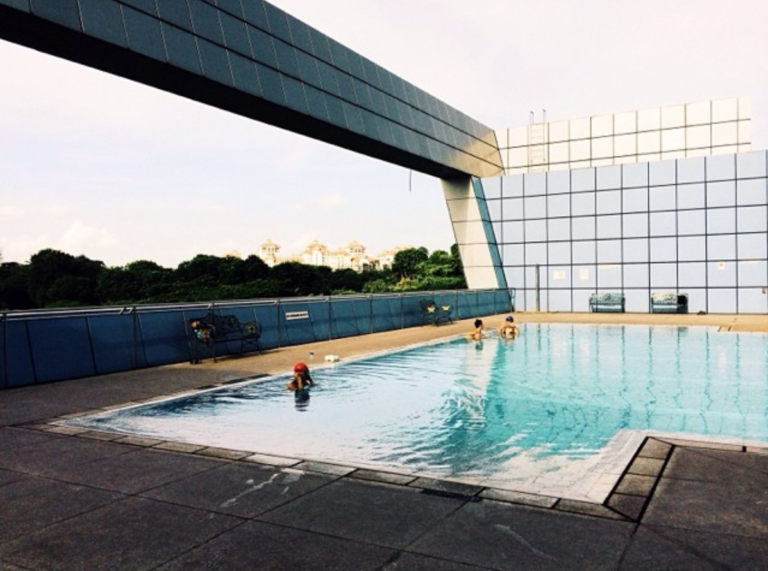
One of my favorite places to swim in Singapore – a pool that overlooks the city.
I think we can also apply the principles of pleasure and attention to almost every other aspect of our lives (but I can attest as to just how difficult it is to do that).
So, what is it that you have been wanting to do but have never gotten down to doing? Are you going to finally start doing them? Share your stories with me if you want by replying to this email. I receive all the replies directly and appreciate every email and story, but might take 2 million years to reply. Even so, I will get back to you eventually.
Now enough talking, let’s start doing.
PS: If you are interested in seeing TI Swimming in action, check out this video titled “The Most Graceful Freestyle Swimming by Shinji Takeuchi”. It’s a short 3-minute video of a 40-year-old Japanese man swimming… like a fish. Shinji Takeuchi also self-taught himself TI Swimming through a DVD. In this video you can see that there is so little splashing of water, so little evidence of effort, and yet he cuts through the water as if a line were pulling him forward. That’s the magic of the TI Swimming method.
PPS: TI Swimming in open water is just as graceful and beautiful.
“If you want to get unstuck, don’t use your mind – use your body.” – Turia Pitt





